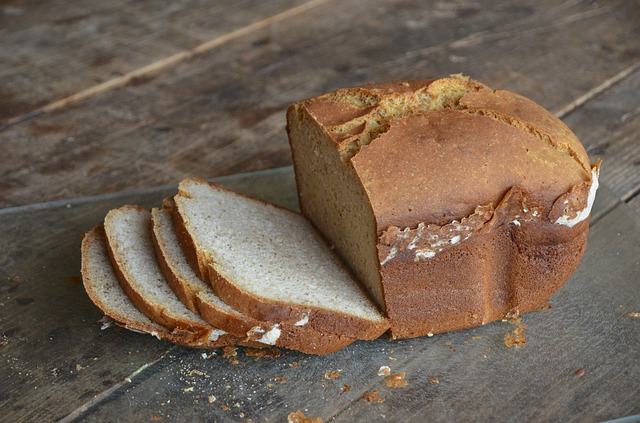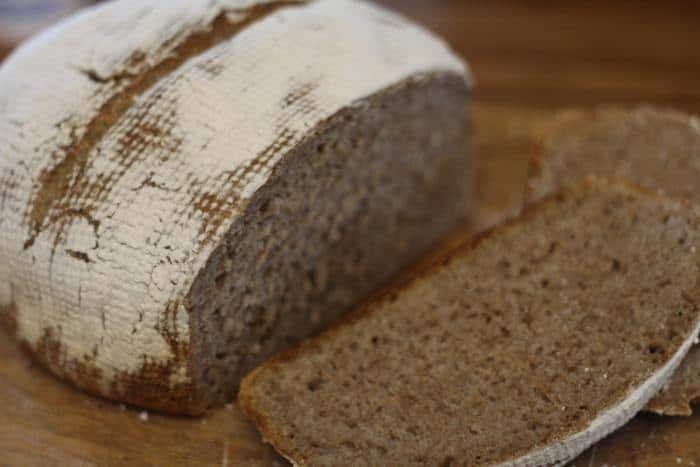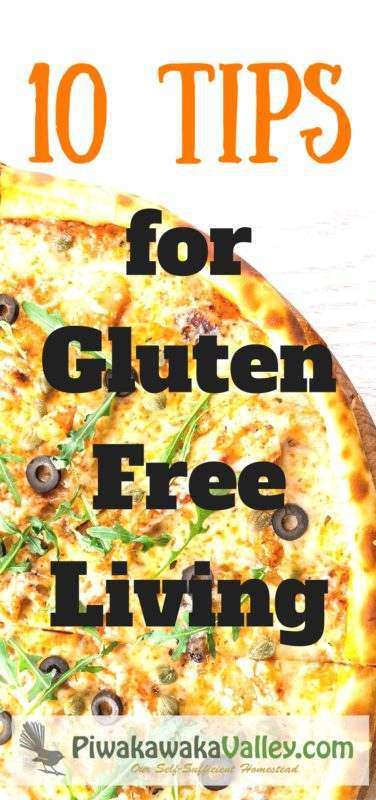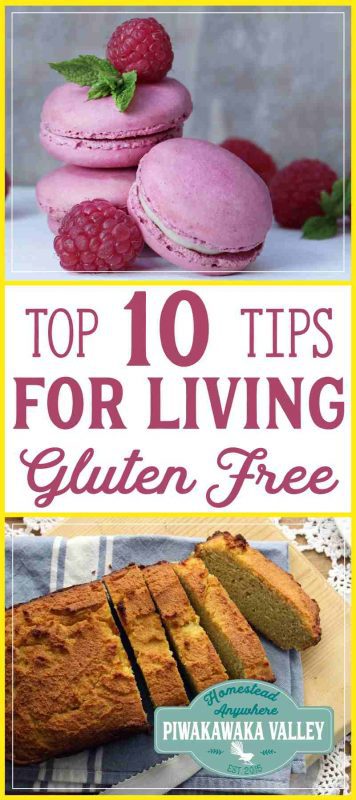This post was most recently updated on December 7th, 2021
We have embraced the gluten-free lifestyle in our house. There are a few exceptions, but generally, we are gluten free and wheat free. Starting out going gluten free or preparing a meal without gluten or doing some gluten free baking for the first time can be very daunting. However, I am here to make it easier for you!
Please read: This information is provided for educational purposes only and is not intended to treat, diagnose or prevent any disease. We encourage you to make your own health care decisions in partnership with a qualified health care professional.
This post contains affiliate links, this means at no extra cost to you, we make a commission from sales. Please read our Disclosure Statement
Below you will find:
My gluten free journey
What is gluten
Celiacs, Gluten Intolerant or Wheat Sensitive. What is the Difference?
Wheat sensitivity symptoms
The top 10 tips for going gluten free
Dana’s Gluten Free baking mix recipe
Foods you can eat when going gluten free – list of naturally gluten free foods
Foods to avoid when going gluten free
Food additives that contain gluten
My Gluten Free Journey
I went gluten free as an experiment in my early twenties as I had been pestered by daily headaches, constant nausea, and exhaustion.
Luckily my doctor has celiac disease herself, so she thought of doing an IgA and IgG blood test on me, which actually came back positive. My body had an immune response to the gluten I ate.
While the test came back positive, it was not high enough for them to test also for celiac disease, but she did suggest that I go gluten free for a month or two and see what happened.
After 4 weeks of bumbling my way through, trying to be gluten free and attempting gluten free baking, I realized something:
My headaches and nausea were gone. I no longer felt exhausted constantly!
Move forward a few years and my two-year-old started complaining of a sore stomach after eating certain foods – you guessed it, it was always after bread, cake or scones (biscuits).
Even now at eight, if she eats too much gluten she gets very red and dry/crusty around the rims of her eyelids.
A few years after that my husband decides to try gluten free too (actually we went totally paleo). Suddenly his once feral gut was no longer room clearing. It was a miracle.
These days he feels the after effects of gluten and dairy for over a week if it somehow ends up in his mouth. Thankfully he tolerates our raw goat’s milk well.
What is Gluten?
Gluten is a protein found in wheat. It is the gel forming protein that binds the flour together. It retains moisture and creates structure in baked goods. There are similar proteins found in rye and barley that may also cause problems for people with gluten sensitivity.
Oats have a slightly different protein that is sometimes tolerated by celiacs and often tolerated by people that have gluten intolerance or wheat sensitivity.
I often use oats in my gluten free baking as we tolerate them well, but you may need to remove them from your diet for a while before cautiously reintroducing them.
Technically oats have no gluten in them, but there is often some cross contamination if wheat and oats are grown next to each other.
So if you are planning on trialing oats on a gluten free diet, make sure they are labeled gluten free oats.
What makes flour gluten free?
Gluten naturally occurs in wheat, it is one of the key proteins that make up the wheat flour. A gluten free flour is one that does not contain wheat in it. Usually it is made of one of the cheaper to produce gluten free flours (or a combination of them) plus a gelling agent to help hold the baking together. Rice and corn flour are usually the base for commercially produced gluten free flours and products.
Gluten Free is All the Rage Right Now – Are we becoming a sooky sick bunch of wimps?
No, I don’t think so. If you look at the stuff that we call food these days, how much of it would your great grandma recognize?
I would hazard a guess that she wouldn’t recognize much.
Our milk is re-formulated and added to. We took out all the cream and replaced it with permeate.
We pasteurize and homogenize and who knows what else to it. It isn’t real milk anymore, it is no wonder our bodies cannot deal with it.
Our wheat, the staple of the human diet for tens of thousands of years isn’t safe from our meddling either.
Modern wheat has significantly more gluten in it than the ancient varieties.
This means it makes much softer, chewier bread, but it is also less tolerated by some of us.
Celiacs, Gluten Intolerant or Wheat Sensitive. What is the Difference?
For the small percentage of the population that has celiac disease, even minute traces of gluten can cause terrible discomfort and substantial damage to the intestinal lining. Celiacs are truly gluten intolerant.
There is an increasingly understood distinction between gluten intolerance and modern wheat sensitivity, yet as more and more people go gluten-free, many are unaware of any difference between the two.
Most of what people call gluten intolerance has been shown by studies to be more a modern wheat sensitivity.
We are not sure yet if it is the increase in the gluten or the herbicides and pesticides that they use on wheat or if something else is causing the reaction in people.
These people with wheat sensitivity can often tolerate old non-modified wheat strains. These include Spelt, Kamut, Emmer, and Einkorn. They can often tolerate sourdough well also.
Do you want to know all our sourdough secrets?? We have compiled it all into one fantastic, informative book.
Wheat Sensitivity Symptoms
Celiac disease symptoms are severe and include – signs and symptoms of malabsorption, including diarrhea, steatorrhea (pale, foul-smelling, fatty stools), and weight loss or growth failure in children.
Gluten intolerance has also been shown to be linked to some neuropsychiatric disorders including autism, schizophrenia, and ataxia.
Wheat sensitivity symptoms are more generalized and related to underlying chronic inflammation – nausea, headaches, malaise, exhaustion, skin irritations, hayfever symptoms and bowel irritations, abdominal bloating, abdominal pain, foggy mind, and depression.
Whether you need to go gluten free, modern-wheat free, or you have celiacs and you have to be very strict about your gluten here are some tips for living gluten free and gluten free baking.
Tips for Going Gluten Free
We are lucky these days to have a HUGE range of gluten free products that we can buy with ease. Unfortunately, they are mostly junk food and so full of random chemicals that I just would prefer to go without.
However, it is totally possible to do gluten free baking and cooking from scratch!
Gluten Free Baking
1.) Pick your recipes carefully. Most recipes with lots of butter or eggs work well with gluten free baking.
2.) Add a gelling agent. If you are making a cake with fruit in it – banana cake, carrot cake, sultana cake you need to add an extra teaspoon of gum powder to the recipe to hold it together.
3.) Add more fat and protein. Some gluten free baking recipes will work if you add an additional egg or more butter – eg scones (biscuits) work best if you add an extra 2-3 Tablespoons of butter.
4.) Always under bake cakes/slices and muffins, and watch cakes closely. I usually under bake cookies by 2 -4 minutes. If you cook them for the full amount of time they will end up dry and crumbly.
5.) Hunt around to find the cheapest flours, Asian food markets often have rice flour much cheaper than the supermarket, and buying some flours in bulk online is sometimes cheaper too.
6.) Check for hidden gluten in things like icing sugar and baking powder as it is often used as an anti-caking agent.
7.) Use a good gluten free baking mix flour substitute. Make your own to save money! See my own recipe of gluten free baking mix below.
Savory Gluten Free Eating
8.) Potatoes and rice and maize cornstarch are gluten free.
9.) Pasta, couscous, bread, breadcrumbs, shake-and-bake coatings, cornstarch (wheaten), many packet foods and jars of sauces contain gluten.
10.) Thicken sauces and gravies with cornstarch (NZ we call it Cornflour) or rice flour. Make sure it says gluten free or maize cornstarch on the box.
Can you make batter with gluten free flour?
Yes you can, and what you make it with depends on what you will use it for, and your taste preferences. We use chickpea (channa) flour or yellow pea flour in with rice flour, baking powder, eggs, salt and water to make a wet batter for coating fish for frying. The high protein content of the chickpea or pea flour makes up for the protein that would usually be in a wheat flour.
My rough gluten free batter recipe is 1/2c chickpea flour, 1/2 c fine rice flour, 1tsp baking powder, 1 egg, 1/2 t salt and enough cold water to make a loose batter.
Dana’s Homemade Gluten Free Baking Mix Recipe
2 C rice flour (the finer the better)]
1 ½ C maize cornflour (cornstarch)
1 C tapioca flour or arrowroot flour (they are practically the same for this job)
1 ½ teaspoons vegetable gum – either xanthan or guar gum
3 teaspoons baking powder
Put all the flours in a large bowl and mix well with a whisk. Store in an airtight container.
This gluten free baking mix works out about half the price of buying the pre-mixed gluten free flour and works just as well. Simply replace 1:1 in most recipes.
The easiest way to eat gluten-free is to eat simple wholesome foods, meat, vegetables, and fruit. And chocolate of course.
Some of my favorite gluten free baking recipes are:
Caramel and White Chocolate Brownie Almond and chocolate cookies Spiced Apple Cake Chocolate Brownie and New York Cheesecake.
What can you eat on a gluten free diet?
You can eat anything that doesn’t contain gluten. If you focus on whole natural foods, then you will be fine as gluten is only in wheat, barley and rye (and some cross-contamination in oats).
- Eat a diet rich in vegetables and fruit
- Lean, unprocessed meat. In general we should be avoiding all the processed nonsense anyway.
- Eggs
- Dairy products (watch out for containing additives)
- Amaranth
- Arrowroot
- Buckwheat and buckwheat
- Corn, corn , corn starch, cornmeal
- Flax
- -free or
- Hominy (corn)
- Millet
- Quinoa
- Rice and
- Sorghum and
- Coconut and
- Almond and
- (channa )
- Soy
- Tapioca and (cassava)
- Teff
- Beans
- Lentils
- Nuts
- Rice
What not to eat when gluten free:
- Wheat
- Barley
- Rye
- Triticale (a cross between wheat and rye)
- Oats (in some cases)
- Durum
- Einkorn
- Emmer
- Kamut
- Spelt
- Enriched flour with added vitamins and minerals
- Farina, milled wheat usually used in hot cereals
- Graham flour, a course whole-wheat flour
- Self-rising flour, also called phosphate flour
- Semolina, the part of milled wheat used in pasta and couscous
- Beer, ale, porter, stout (usually barley)
- Breads
- Bulgur
- Cakes and pies
- Cereals
- Communion wafers
- Cookies and crackers
- Croutons
- French fries
- Gravies
- Imitation meat or seafood
- Malt, malt flavoring and other malt products (barley)
- Matzo
- Pastas
- Hot dogs and processed luncheon meats
- Salad dressings
- Sauces, including soy sauce
- Seasoned rice mixes
- Seasoned snack foods, such as potato and tortilla chips
- Self-basting poultry
- Soups, bouillon or soup mixes
- Vegetables in sauce
Additives that Contain Gluten
Barley (flakes, flour, pearl)
Breading, bread stuffing
Brewer’s yeast
Bulgur
Durum (type of wheat)
Farro/faro (also known as spelt or dinkel)
Graham flour
Hydrolyzed wheat protein
Kamut (type of wheat)
Malt, malt extract, malt syrup, malt flavoring
Malt vinegar
Malted milk
Matzo, matzo meal
Modified wheat starch
Oatmeal, oat bran, oat flour, whole oats (unless they are from pure, uncontaminated oats)
Rye bread and flour
Seitan (a meat-like food derived from wheat gluten used in many vegetarian dishes)
Semolina
Spelt (type of wheat also known as farro, faro, or dinkel)
Triticale
Wheat bran
Wheat flour
Wheat germ
Wheat starch
Atta (chapati flour)
Einkorn (type of wheat)
Emmer (type of wheat)
Farina
Fu (a dried gluten product made from wheat and used in some Asian dishes)
For help with shopping check out the tips here.
What is your favorite Gluten Free Recipe or Tip? Let me know in the comments below!
For further read check out these books:
Please Pin and Share with your friends!








